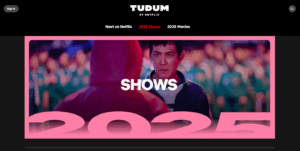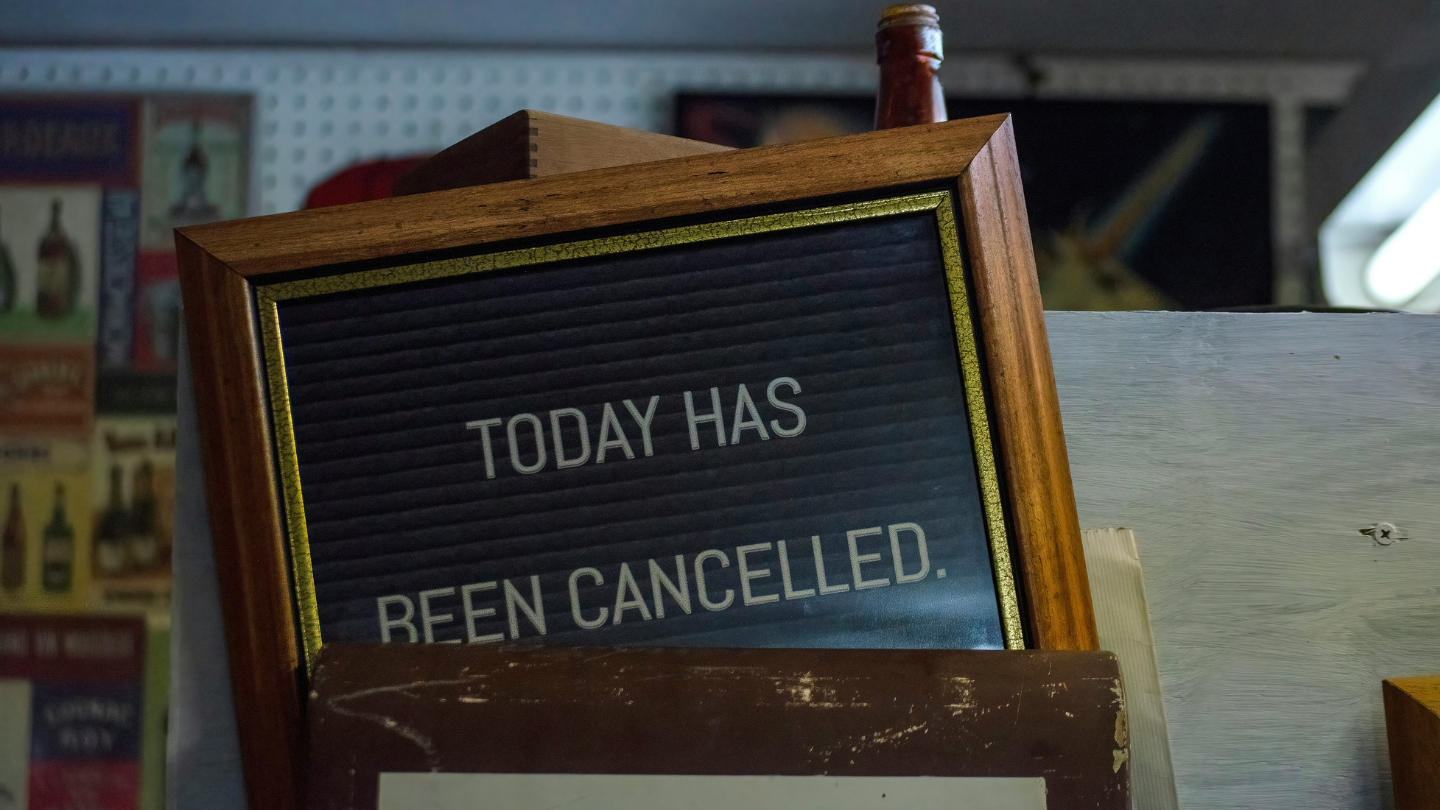A Detailed Guide on How to Build ecommerce Subscription CX That Drives Retention [Examples + Brand Playbooks Inside]
The ecommerce brands that have gotten ahead in the subscription race are the ones that build experiences tuned for consistency, transparency, and surprise. It means creating moments that nudge customers to stick around for the long run.

From Netflix to nail kits, now everything is a subscription.
A few years ago, subscriptions meant magazines or gym memberships. Fast forward to now, your pantry, pet supplies, and self-care routine are on autopilot too. If it can be used, refilled, or curated, it can be subscribed to.
As a result, ecommerce subscriptions have taken off, spanning everything from razors to ramen kits, transforming how customers meet everyday shopping needs and how DTC brands grow.
Let’s run by a few numbers to put this shift in perspective:
- Globally, subscription ecommerce hit $3T in 2024
- The subscription commerce economy contributes 40.8% to the overall market
- 1 in 2 online shoppers has tried a subscription box
While these numbers substantiate the exponential growth of subscription ecommerce, it has flipped the Customer Experience (CX) playbook.
The recurring cadence of purchases in the subscription model creates an ongoing cycle of brand interactions. Brands now manage more support tickets, ‘Where is my order’ (WISMO) inquiries, and expectations for tailored and friction-free experiences.
Each of these touchpoints is a chance to impress (or disappoint) the customers.
So, how do you stand out when more and more customers are leaning toward subscriptions, and the DTC subscription space is getting crowded by the day?
It all comes down to this: CX strategies should be built with a focus on strengthening customer trust and driving habit.
The ecommerce brands that have gotten ahead in the subscription race are the ones that build experiences tuned for consistency, transparency, and surprise. It means creating moments that nudge customers to stick around for the long run.
We’re diving into all of this below:
- First, we cover the unique challenges of running a subscription-based DTC brand.
- Then, we break down how to build a CX strategy that is tailored for the subscription economy.
- Finally, we look at how to use technology at scale, reduce churn, and extend subscriber lifetime. We’ve also got two case studies of DTC brands to show you what works in practice.
Understanding the unique challenges of subscription ecommerce
We’re witnessing a wild evolution in subscriptions—from a niche offering in ecommerce to a slew of brands defaulting to it, to what now seems to be more of a tempered approach.
According to a report by PYMNTS, 42% of retail subscribers shared that they shop in-store less frequently because of their subscriptions. That number went up to 56% for Stitch Fix and 53% for Chewy’s Goody Box users.
The shift in customer behavior brings its own set of challenges. Subscription ecommerce takes on many of the hurdles that brick-and-mortar and traditional DTC brands are already dealing with (like high CAC, low AOV, and churn). Add to that, they face a 30-day deadline to fix these gaps.
Ask any subscription brand founder what breaks growth, and you will hear the same thing: churn. This is not because their product is bad, but because the CX didn’t keep up.
The importance of CX in subscription models
Customer experience in subscription ecommerce isn’t a one-off impression. It’s an ongoing contract, one that’s judged every billing cycle. Every box, charge, and email serves as a checkpoint.
All of which raises the stakes for CX. The longer the subscription runs, the more friction points appear, making CX core to the product strategy.
Impact of CX on retention and lifetime value
Strong retention rates are a result of predictable and convenient experiences.
Recent reports prove that subscription brands that have managed to deliver consistent, transparent experiences are seeing 42% retention after 12 months. A rate that is well above the ecommerce repeat purchase average.
On the downside, subscription boxes are said to lose 10% of their customers every month.
Much of that churn can be a result of weak CX touchpoints. A few of the most common issues include:
- Inflexible plans
- Delivery delays without updates or rigid delivery windows
- Poor communication before billing cycles
- Hard-to-cancel subscriptions
To boost long-term customer value, leading subscription brands connect qualitative CX insights to revenue outcomes.
Instead of just tracking churn rates, they monitor:
- Net Promoter Score (NPS) and declines
- CX ticket categories and response time
- Skip and downgrade behavior
- Survey text and cancellation reasons
Additionally, CX teams also need tools that surface intent signals and make it easy to act on the insights. By tracking behavior (who skips, who downgrades, who contacts support), brands can connect these signals to churn risk and take early action.
For instance, if a customer skips three months in a row, you can offer a plan downgrade. This behavior-based CX approach boosts Lifetime Value (LTV) without resorting to lock-ins or making the customer feel trapped.
The differences between one-time purchases and subscriptions
With one-time purchases, the CX focus is mostly pre-sale and fulfillment.
Unlike single purchases, subscribers have more time to regret their decision and more chances to leave. This changes how subscription brands think about CX.
The post-purchase experience matters more in subscription ecommerce. That’s why subscription CX strategy must include:
- Customization that is built into the product
- Predictable billing timelines
- Clear and proactive communication for every cycle
- Frictionless changes (be it skips, edits, or downgrades)
- Support trained for retention, not just issue resolution
Given the top reasons why customers subscribe, brands also need to find ways to continually demonstrate value to retain subscribers.

Common pain points in subscription CX
Let’s unpack some of the most common subscription e-commerce CX challenges and how to overcome them.
1. Managing expectations and delivery timelines
Predictability is everything in recurring delivery. When a subscription box is delayed and the charge goes through anyway, your brand’s reputation takes a direct hit.
Some of the common mistakes that brands make include:
- Not updating customers about delays or missed cutoffs
- Skips that don’t trigger confirmations
- Charging users before confirming shipment
What to do instead:
| Scenario | What subscribers expect | What great CX teams deliver |
| Box delayed | Honest ETA + why | SMS/email update with timeline and reason |
| Skipped cycle | Instant confirmation | Automated alert + follow-up before next charge |
| Billing issue | Fast resolution + refund timeline | Refund + trust-building follow-up |
2. Handling cancellations and pauses
Your customers shouldn’t have to dig through FAQs or call support to stop a service. Some of the best subscription brands don’t just make cancellation simple, but they also learn from it.
A better approach to follow would be: make cancellations easy, then use churn data to identify patterns, tag exit reasons, and trigger smart flows.
- Customer is taking a vacation? Offer a pause or flexible reactivation.
- Cost concerns? Suggest a smaller plan.
- Product issues? Enable quick returns based on feedback.
3. Personalization and engagement
Personalization is one of the top reasons why customers continue their subscription.

Making each subscription box customized for the person receiving it is hard to scale, but not impossible.
Brands that get this right are:
- Using engagement data (e.g., open rates, product ratings, skips) to segment subscribers
- Adjusting delivery cycles or product curation based on past behavior
- Triggering nudges when engagement drops (“Want to skip this one?” or “Change what’s inside!”)
- Leveraging tools like Klaviyo and Postscript to trigger intelligent flows at each key stage, right from the first shipment
Crafting a CX strategy tailored for subscriptions
In subscription ecommerce, the experience is the product. The CX strategy for subscription ecommerce requires a nuanced approach that addresses the challenges of recurring customer interactions.
Though subscriber expectations evolve, delivering a compelling experience consistently remains a primary driver for revenue.
Onboarding new subscribers effectively
The faster customers get to value, the longer they stay. A well-executed onboarding process can significantly reduce early churn and set the foundation for long-term subscriber relationships.
Welcome email and unboxing experiences
The welcome emails serve as the first direct communication with new subscribers. They need to be personalized, informative, and provide clear next steps.
A good welcome email answers three questions:
- What did I buy?
- When does it arrive?
- What happens next?
Feminine care brand Rael uses this moment to offer exclusive discounts (a 10% discount on the first order + free shipping for orders above $50).

Saltair, a body care brand, uses the welcome email as an opportunity to introduce new subscribers to their most-loved products.

Pair your welcome email with a memorable unboxing experience. From personal notes to thoughtful packaging to even QR codes leading to a page with tips on how to use the product, brands are going all out to enhance the perceived value of the subscription and make the customer feel appreciated and connected with the brand.
Pela, the eco-conscious phone case brand, includes a handwritten note and a printed insert with each order. The insert features disposal instructions, a branded hashtag to use on social media, and a link to deeper resources on Pela’s sustainability practices.

Setting expectations for delivery and billing
Reducing churn in ecommerce subscriptions starts with clarity, especially around delivery and billing. Most WISMO tickets come from subscribers not knowing when to expect their delivery. Brands using proactive and automated alerts via email or SMS reduce support load and build trust from day one.
Supermoon lets you schedule branded updates at key stages (in transit or out for delivery).
On the billing front, platforms like Zenskar help teams manage complex billing workflows (from add-ons to mid-cycle upgrades) while keeping customers informed at every step.
Personalizing the subscriber journey
Top subscriber brands don’t wait for customers to tell them what they want—they track, infer, and adapt in real time.
Utilizing customer data for tailored experiences
By collecting and analyzing customer data early on in the journey, brands can offer more relevant product recommendations and offers. From onboarding quizzes to ongoing behavior tracking, brands like Dollar Shave Club leverage these data points to ensure the experience is on point.

Besides this, factors like order skips, customer ratings, reviews, and support tickets can all be used to inform product recommendations.
Dynamic content and product recommendations
Implementing dynamic, contextual content in emails, newsletters, and on websites ensures that customers see products and messages that resonate with their interests.
For instance, a customer who clicked “pause” last month should not get a “buy again” email; they should instead be sent a “try something new” email.
Real personalization means brands enabling product swaps based on usage patterns (e.g., after two skipped orders of newborn diapers, the brand can suggest the next size). It also means triggering dynamic offers mid-cycle, instead of waiting for churn. Klaviyo can be used to push real-time product suggestions based on recent returns or abandoned reorder flows.
Proactive communication and engagement
From low-stock notices to shipping alerts and payment reminders, you need to maintain regular and meaningful communication with subscribers.
Regular updates and check-ins
Providing timely updates about order status, product changes, or upcoming renewals keeps customers informed.
Send proactive messages (like the ones given below) before the user asks:
- “Heads up: your card is expiring in 3 days.”
- “We noticed you skipped 2 boxes. Do you want to pause instead?”
Brands can get inspired by the likes of Netflix and Amazon Prime that send proactive notifications about new content releases and account updates.

Educational content and community building
Some of the leading brands make exceptional efforts to educate and connect with their subscribers. Whether it’s member-only forums, weekly how-to newsletters, or community content, it makes the subscription stickier and builds a loop beyond the product.
Streamlining support for subscribers
Your subscribers aren’t one-time shoppers. They deserve better than ticket numbers and auto-responses.
Self-service options and knowledge bases
Make cancellation, skip, and reschedule options easy to find and even easier to use. The best retention comes from removing blockers. The FAQ page should be smart, searchable, and updated monthly. Platforms like Shopify offer native integrations for searchable help docs.
Responsive customer service channels
Offering multiple support channels, including live chat, email, and phone support, ensures that customers can reach out through their preferred method.
Brands like Supermoon unify email, live chat, and social DMs for your support team and help agents deliver responses with AI-assisted drafts and automations.
Leveraging technology to enhance subscription CX
Technology plays a crucial role in refining the subscription ecommerce customer experience. According to Gorgias, 94% of experts believe automation, in particular, is gaining traction in ecommerce. Brands have also witnessed an 8-point increase in repeat purchase rates within 28 days by automating responses to repetitive inquiries.
We will now take a look at some of the promising tools and strategies to improve subscription CX.
Integrating subscription management tools
Platforms like Recharge and Bold Subscriptions are offering next-gen solutions for automating billing and managing subscriptions.
- Recharge provides features like no-code customer portals, dynamic bundles, and tiered discounts, all while empowering customers to manage their subscriptions independently.
- Bold Subscriptions offers a fully customizable API-first solution and comes loaded with features like dynamic discounting and advanced scheduling to help retain subscribers and maximize revenue.
Utilizing analytics for continuous improvement
Understanding why subscribers cancel is essential for reducing churn in ecommerce subscriptions. Churn analysis involves examining customer behavior and feedback to identify patterns leading to cancellations.
CX Platforms like Supermoon utilize AI to analyze the sentiment of your customers, the satisfaction score of each interaction, and the most common overall themes of your inbox. These help support teams better understand their strengths and weaknesses.
Case studies: Successful subscription CX strategies
The two brands below have used personalization and community-building CX tactics to drive measurable business impact.
Stitch Fix: How personalization results in increased retention
Stitch Fix, an online personal styling service, built its subscription ecommerce customer experience around structured personalization. The company used sophisticated algorithms to analyze customer data, which included customer preferences, body measurements, and purchase history.
The algorithms run thousands of permutations to create recommendations, which are then analyzed and refined by a human stylist for each curated box of clothing (also called Fix).
Every fix is rated and reviewed to further fine-tune product selection and match changing customer preferences.
To deepen loyalty and encourage more frequent orders, Stitch Fix launched the Style Pass for $49/year, waiving the $20 styling fee.
The results:
- Customers active for a year or more spend 70% or more
- Repeat buyers are likelier to buy at full price
Lesson learned: Improving retention in subscription models means combining automation with human input.
BarkBox: Community building, enhancing customer loyalty
BarkBox, a dog subscription box, treats each delivery as a moment worth sharing. Customers are asked to share posts on social media of their themed boxes using the hashtag #BarkBoxDay.

The brand reshares user posts and features their pets in stories. They also run product surveys and use those responses to decide upcoming releases.
The results:
- BarkBox’s subscription renewal rates hit 90%
- Social content from subscribers has driven consistent referral traffic
Sustaining growth through exceptional subscription CX
The best subscription ecommerce customer experience feels personal—because it is. Some of the leaders in the space don’t stop at automation. They invest in systems that learn from every click, every delivery, and every review.
That’s what drives long-term retention. When subscribers feel known, they stick around, spend more, and tell others.
Having said that, growth doesn’t stop at a one-time setup. Your systems need to evolve as buyer behavior shifts. This means testing new triggers, updating tracking emails, and refining how you collect feedback.
Supermoon helps you fix those gaps. With pre-built email templates and smart delivery updates, your team will have all the tools to keep your subscribers informed and engaged.
Sign up with Supermoon and make every renewal easier to win.
Ready to get started?
Don't miss out on the opportunity to leverage the power of AI. Take the leap into the future now!
Try for free




